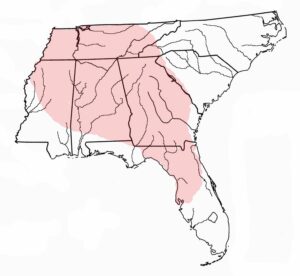 NAME: Gregory Perino applied this descriptive name to a group of three transitional forms used by the Adena culture in making the Adena point, the Cresap point, and the Robins point (that has become known as the Adena Robins point).
NAME: Gregory Perino applied this descriptive name to a group of three transitional forms used by the Adena culture in making the Adena point, the Cresap point, and the Robins point (that has become known as the Adena Robins point).
AGE: The Adena culture existed between 1000 and 200 B.C. The Adena culture was centered in Ohio, Kentucky and Tennessee, but its influence spread as far south as Florida, as far east as New York, and as far west as Missouri, carrying its lithic tradition with it.
DESCRIPTION: The three forms illustrated by Perino included a flat-based form with excurvate edges, a round-base form that is fairly narrow (most common) and a round-base form that is fairly wide. A fourth, bi-pointed, form has been added to this group that is illustrated by Robert Overstreet. Proper identification of any of these forms will depend largely on their association with other identifiable Adena point forms of which there are several. These transitional forms, like other pre-forms will be shaped through random percussion flaking. The illustrations by Perino show some secondary flaking along the blade edges that removed blade edge irregularities. Perino regarded the flat-based form as the pre-form for the Cresap point and therefore the oldest of the forms. All forms have an acute distal end. The narrow, round-based form he believed was used in making the Adena point. The broader round-based form was used in making the Robins point. The addition of the bi-pointed form may be suited for making the Adena Wells or Turkey Tail points.
DISTRIBUTION: Adena points are known as far south as Crystal River, Florida and east into New York and west into Missouri, but the heaviest concentrations are within the Ohio to Tennessee area.
Information for this article was derived from James W. Cambron and David C. Hulse, Handbook of Alabama Archaeology, Alabama Archaeological Society
Maps were developed by Lloyd Schroder